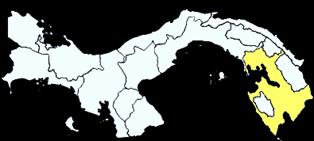er, and founded the colony known as New Caledonia. They established a town which they christened New Edinburgh. The colonists lacked the necessary construction skills so most fashioned huts out of readily available material. They also constructed an earthen fort for defense.
 During the year they withstood an attack by a Spanish force which attempted to confront them. The few ships that stopped were not interested in the wares the Scots had to offer and left. The supply ship from Scotland was shipwrecked leaving the colonists with only the few stores that remained and what they could gather from the jungle. Lack of provisions and the colonies inability to grow their own food led to an outbreak of disease related to the climate and unsanitary conditions. This soon decimated the expedition. In June 1699 the remaining Scots were forced to leave New Caledonia, and retreated to Jamaica. Less than 50 colonists arrived safely.
During the year they withstood an attack by a Spanish force which attempted to confront them. The few ships that stopped were not interested in the wares the Scots had to offer and left. The supply ship from Scotland was shipwrecked leaving the colonists with only the few stores that remained and what they could gather from the jungle. Lack of provisions and the colonies inability to grow their own food led to an outbreak of disease related to the climate and unsanitary conditions. This soon decimated the expedition. In June 1699 the remaining Scots were forced to leave New Caledonia, and retreated to Jamaica. Less than 50 colonists arrived safely.
Unaware of the situation in New Caledonia, a second expedition left Scotland in September 1699 from Port Clyde River with four ships: the Rising Sun, Hamilton, Hope of Boroughstonness and Company’s Hope. It consisted of 1,300 men. On November 30, 1699 they arrived safely at the port of New Caledonia, only to find it abandoned. They set about rebuilding the deserted huts and fort. Within a year of their arrival once again they were attacked by a Spanish force. They defeated the Spanish in a jungle battle, but the Spanish laid siege to New Edinburgh from their ships. The Scots bravely resisted for a month. Exhausted and without external support. In March, 1700, they requested that the Spanish commander set conditions for surrender.
The surviving Scots made their way to the English colonies in the Caribbean only to be turned away. They sailed north to the English colonies. Many more died on the trip. Upon landing many were forced into indenture. The Darien Scheme has been called Scotland’s greatest disaster, even greater than Culloden. Two thousand men, women and children had been sacrificed to a national hubris, drowned at sea, buried in Darien, abandoned in Spanish prisons, or lost forever as indentured servants in English colonies. Only three hundred of the colonists, soldiers and seamen ever returned to Scotland.
The project was doomed from the start. Lacking prior knowledge, the leaders chose one of the most inhospitable places in Central, America. Additionally,
they chose to settle on a bay with tides and wind that prohibited many ships from entering (Ships of that time had difficulty sailing off the wind. Ships had to ‘tack’ across the wind and the narrowness of the bay limited the ships ability to tack.) thus limiting their chances of trade.
Darien
Scotland’s efforts at colonization were not completely unsuccessful. One that actually succeeded was Darien, Georgia. It was named in honor of Scotland’s ill fated Darien Scheme. The town of Darien (originally known as New Inverness) was founded in January 1736 by Scottish Highlanders recruited by James Oglethorpe. He hoped their strong clan associations would serve them well as settler/soldiers protecting the frontiers of Georgia from the Spanish in Florida, the French in Alabama, and their Indian allies.
On January 10, 1736, 177 emigrants, including women and children, arrived on the Prince of Wales to establish New Inverness. As the colony expanded the name evolved into Darien. Initially the settlers’ economy was based on the cultivation of crops. However, after the first year, they suffered a succession of poor harvests. They concentrated on rearing cattle and harvesting timber for sale in nearby Savannah.
 The most notable accomplishment of the Scottish settlers had nothing to do with trade. In 1739 Governor James Oglethorpe, the Trustees and several prominent inhabitants of Savannah landowners wanted to lift the prohibition against slavery. Eighteen of the most prominent members of the Darien colony signed the first petition against the introduction of slavery into Georgia. The Highlanders’ petition was successful. It was the first real attempt to stop the spread of slavery and something for which the Highlanders could be rightfully proud. Sadly, slavery was introduced ten years later in 1749 because the Proprietors could not attract enough laborers to make the colony profitable.
The most notable accomplishment of the Scottish settlers had nothing to do with trade. In 1739 Governor James Oglethorpe, the Trustees and several prominent inhabitants of Savannah landowners wanted to lift the prohibition against slavery. Eighteen of the most prominent members of the Darien colony signed the first petition against the introduction of slavery into Georgia. The Highlanders’ petition was successful. It was the first real attempt to stop the spread of slavery and something for which the Highlanders could be rightfully proud. Sadly, slavery was introduced ten years later in 1749 because the Proprietors could not attract enough laborers to make the colony profitable.
Again in January 1775, the city of Darien passed a resolution condemning slavery, saying:
“To show the world that we are not influenced by any contracted or interested motives, but a general philanthropy for all mankind, of whatever climate, language, or complexion, we hereby declare our disapprobation and abhorrence of the unnatural practice of Slavery in America, (however the uncultivated state of our country, or other specious arguments may plead for it,) a practice founded in injustice and cruelty, and highly dangerous to our liberties, (as well as our lives,) debasing part of our fellow-creatures below men, and corrupting the virtue and morals of the rest; and is laying the basis of that liberty we contend for (and which we pray the Almighty to continue to the latest posterity) upon a very wrong foundation. We therefore resolve, at all times to use our utmost endevours for the manumission of Slaves…”
Darien Committee,
Darien Resolutions, January 12, 1775